Active Projects
Building soils, communities and profits in the Colca River Valley of southern Peru with organic farming systems
Demand for food grown using organic farming practices is growing rapidly providing an opportunity for farmers in the Colca River Valley to increase the profitability and sustainability of their operations. However, organic farmers often struggle to meet nutrient needs and control pests, which can limit crop yields and reduce capacity to meet food security goals. Moreover, soils within the Colca Valley may be contaminated with toxic heavy metals and metalloids such as arsenic and cadmium, which can exacerbate pest problems, lower crop yields, and negatively impact human health when these toxic elements are taken up into edible plant tissues. Farmers in the Colca Valley need help in developing locally adapted solutions to overcome these challenges and realize the benefits of organic systems. To aid in these needs, this project aims to: 1) increase adoption of organic farming practices by identifying specific barriers preventing farmers from transitioning and conducting targeted training programs to help farmers overcome these barriers; 2) increase crop productivity and food safety by identifying locally-relevant management practices that can improve soil health and reduce the uptake of heavy metals into crops; 3) further improve soil, crop, and human health by developing new, more effective ways to generate high-quality compost using a modified bokashi system; 4) train local growers how to sustainably grow high-value warm season crops like tomato in earthen, greenhouse-like structures; and 5) establish the framework for a new graduate certificate in Agroecology and Sustainable Agriculture Development that will serve as the foundation for a graduate program in Agronomy at UNSA. Funding for this project is generously provided by the Arequipa Nexus Institute. More information about the Arequipa Nexus Institute can be found at the following website: https://www.purdue.edu/discoverypark/arequipa-nexus/en/index.php
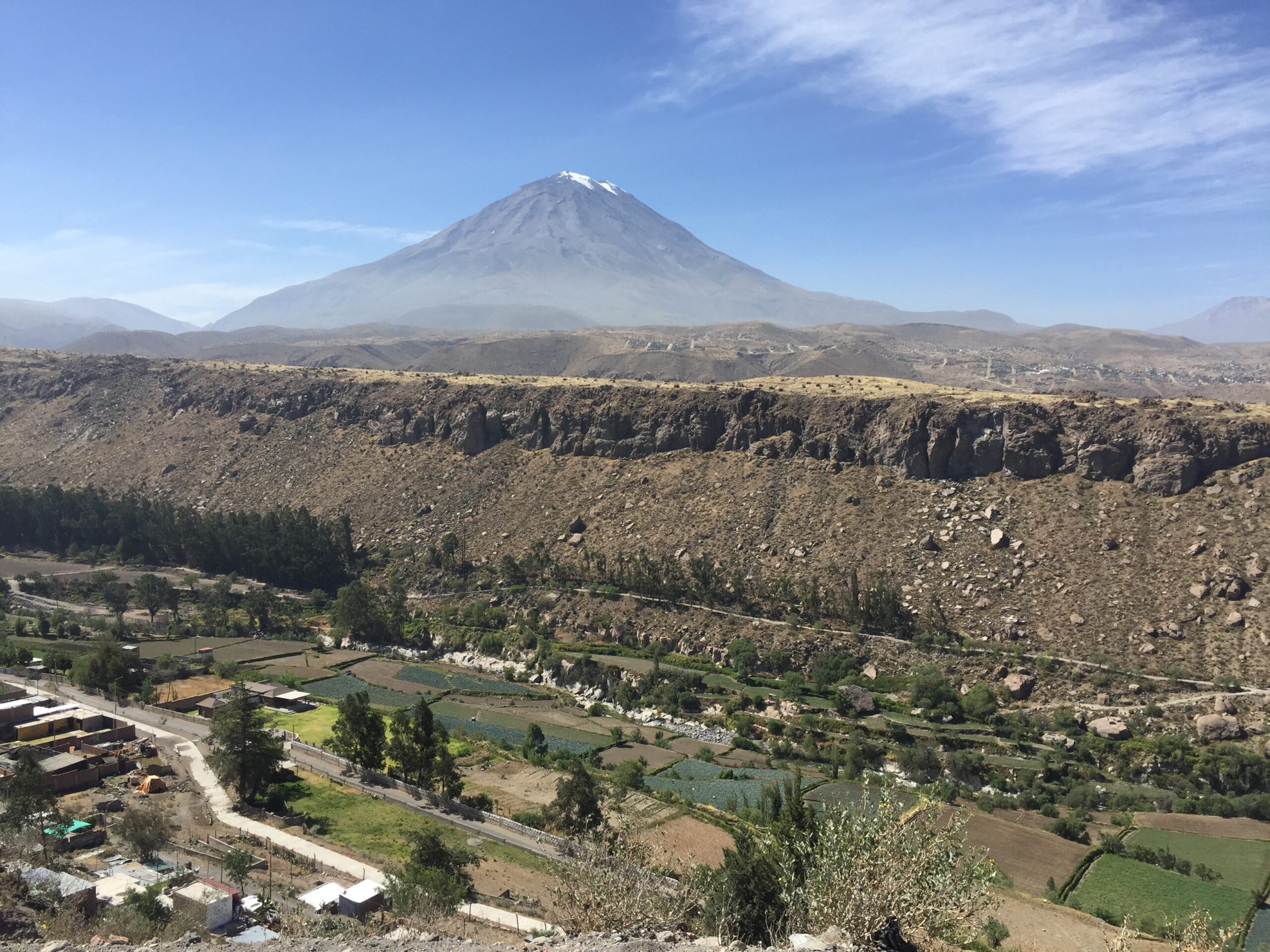
Vegetables growing along the Chili River near Arequipa, Peru
Exploring the role of legume intercropping on coffee root microbiomes
Coffee is a critically important crop for Colombia and the world. Meeting nutrient needs and controlling pests can be a challenge, however, and the economic and environmental costs of existing fertility and pest management strategies are increasing. One opportunity to help overcome these challenges is to intercrop coffee plants with legumes like Tephrosia and Guandul. In addition to being able to help meet a coffee plant's nutrient needs by fixing atmospheric nitrogen, intercropping with these leguminous plants could alter the composition of beneficial microbes within coffee root systems that can enhance nutrient and water uptake, and help coffee plants fight pathogens and insect pests. To investigate this process, we are collaborating with scientists at Cenicafe, the world's premier coffee research institution. Field plots are underway at three locations in Colombia: Naranjal, Quindio, and Cauca. Funding to help support this project is provided by the U.S.-Colombia Fulbright program.
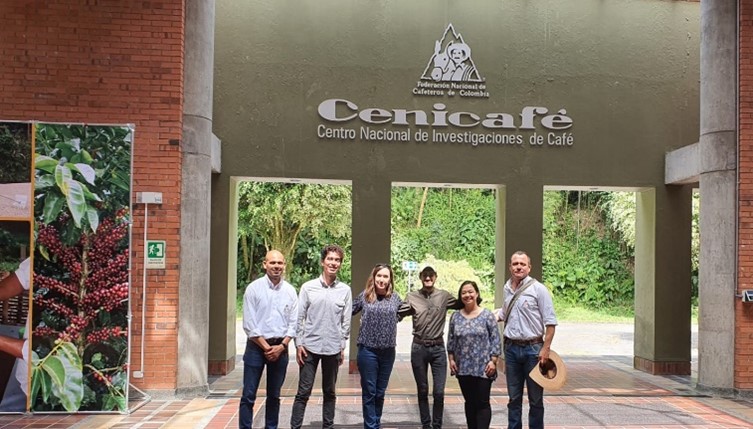
Research team visiting the Cenicafe research station near Chinchina, Colombia. From left to right: Dr. Lucio Navarro (Cenifafe), Esteban Villamizar Buitrago, Lori Hoagland, Cristian Salinas Castillo, Dr. Sherlyn Tipayno, Dr. Hernan Gonzalez Osorio (Cenicafe)
Dig-it: connecting soil health with productivity and food safety in Indiana’s urban agriculture sector
Urban agriculture can provide many benefits, yet soils are often degraded in urban centers which can reduce the productivity and quality of produce and make crops more susceptible to pests. In some cases, soils in urban and peri-urban areas can also be contaminated with heavy metals and other contaminants which further threaten plant as well human and environmental health. This project aims to address these challenges by: 1) collaborating with urban growers across the state to identify the most effective soil-building and heavy metal remediation strategies, 2) determining how soil, environmental and crop management practices on urban farms interact to influence the survival and virulence of plant and food-borne pathogens and nutritional quality of vegetable crops, 3) identifying additional research needs in urban agriculture, and 4) strengthening networks between urban farmers, Extension educators and researchers. This project is supported by the Indiana State Department of Agriculture through a Specialty Crop Block Grant (ISDA-SCBG).
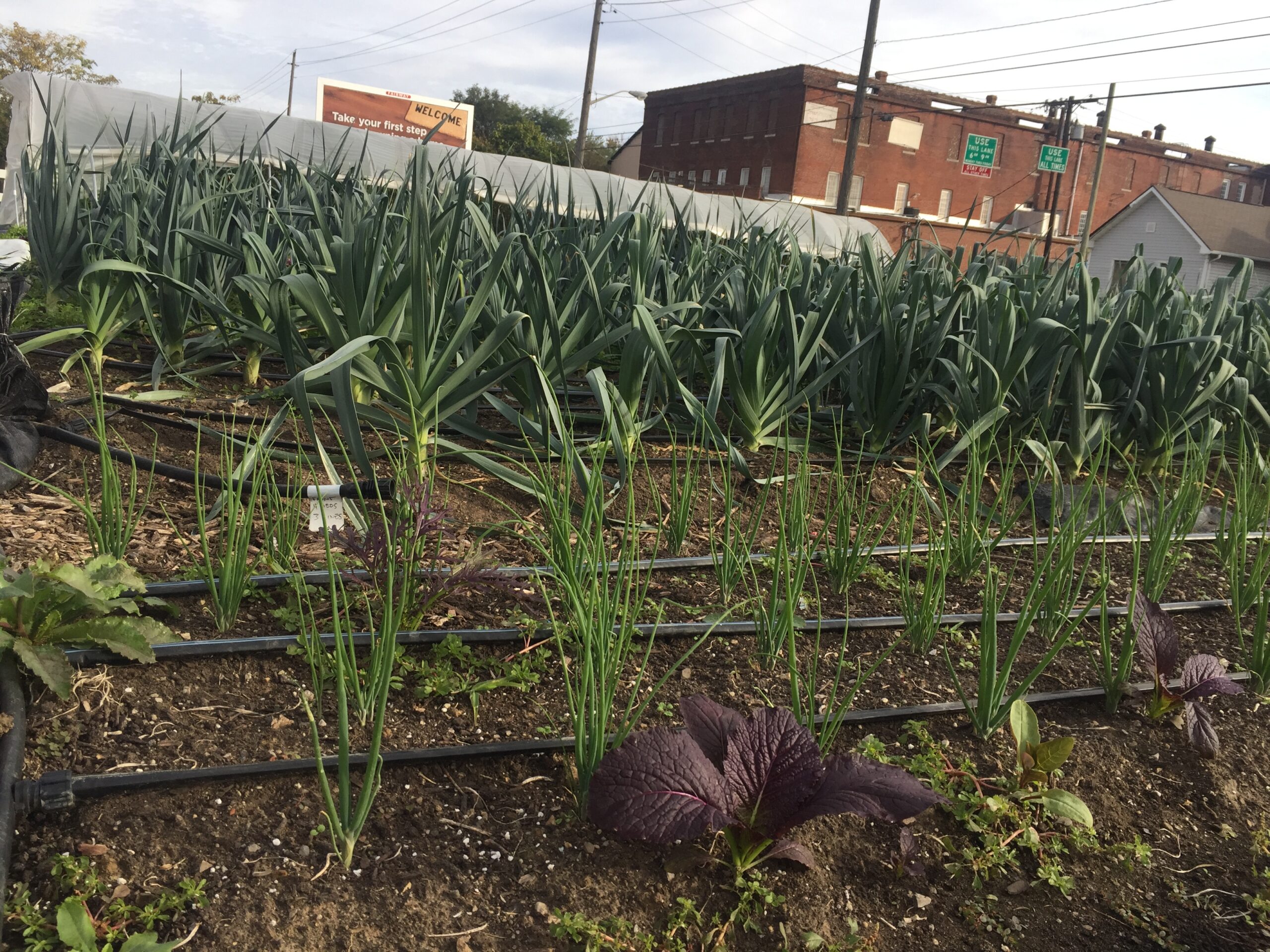
Urban farm in Indianapolis growing a diverse assortment of vegetable crops
Understanding the implications of micro- and nanoplastics on soil microbial processes and plant stress responses
Micro- and nanoplastics are becoming increasingly prevalent in soil and water systems, but their implications on soil microbiomes and the processes they mediate, and on plant performance, are still unclear. Evidence is accumulating that some of these materials may accumulate in plant tissues, which could in turn influence human health. To better understand these implications and identify ways to overcome them if they can indeed cause significant challenges, we are collaborating with Dr. Lucini Luigi and Leilei Zhang at the Universita Cattolica del Sacro Cuore. Experiments are underway using tomato and lettuce as model crops, and we are using Purdue's Automated Phenotype Facility to aid in the insights developed in these studies.
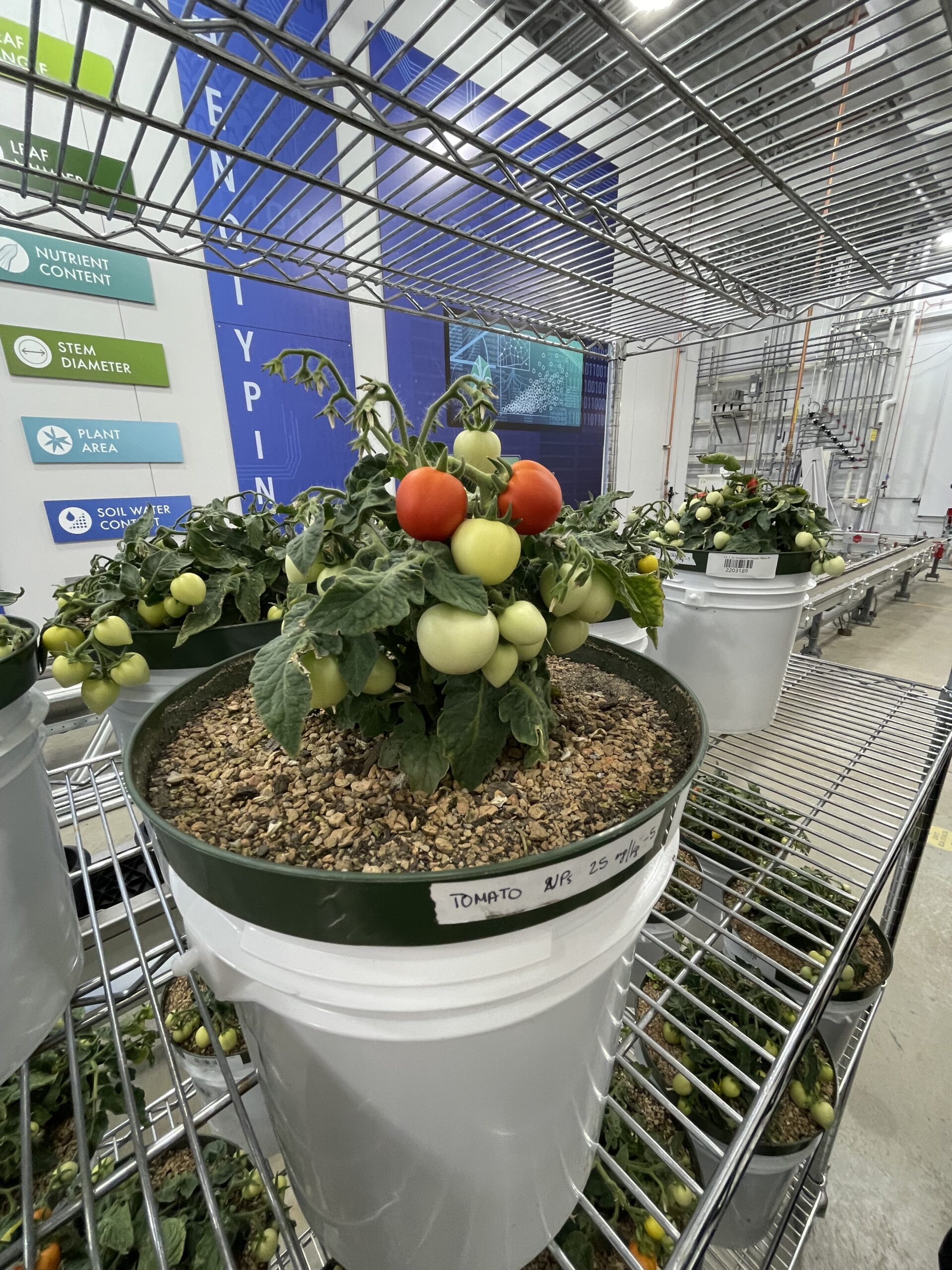
Using hyperspectral imaging to quantify the impact of nanoplastics on plant physiology
Tomato Organic Management and Improvement Project (TOMI)
Tomatoes are one of the most important vegetable crops in the world, but they are susceptible to a wide range of disease-causing pathogens that reduce the yield and quality of this crop. This large multistate, multidisciplinary project aims to overcome this challenge by: 1) identifying soil management practices that promote populations of native soil microbes with pathogen suppressive activity, 2) identifying factors that can better support the survival and efficacy of biopesticides which contain live cultures of pathogen suppressive microbes under field conditions, 3) developing new open-pollinated tomato varieties that have genetic resistance to the most virulent pathogen strains and produce fruit with exceptional flavor, 4) identifying mechanisms mediating differences in responsiveness among tomato germplasm to beneficial microbes that induce systemic resistance to pathogens, and 5) developing new tools and breeding strategies to integrate selection for beneficial plant-soil-microbial relationships into tomato breeding programs. Our team is also conducting outreach activities that help organic growers better manage diseases use multiple tools, learn how to conduct on-farm trials to identify practices best suited to their farms, participate in breeding programs, and save pathogen-free seed. Other institutions involved in this project include The Organic Seed Alliance, North Carolina A&T University, the University of North Carolina, the University of Wisconsin-Madison, and Oregon State University. Additional information about this project and resources for growers can be found at the following website: https://eorganic.info/tomi. This project is supported by the USDA National Institute of Food and Agriculture Organic Research and Extension Imitative (NIFA-OREI) #2014-51300-22267; #2019-51300-30245.
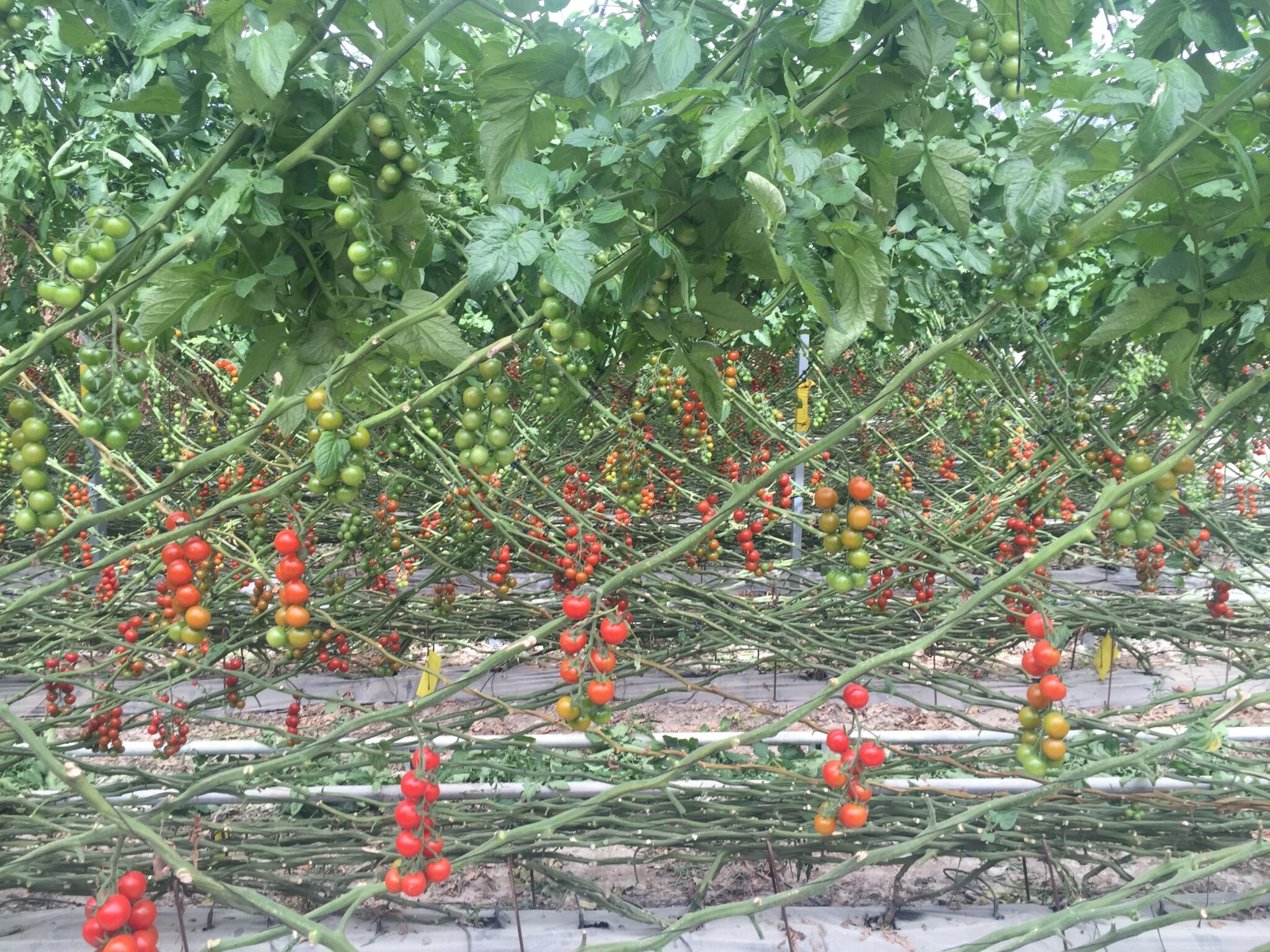
Organic tomato production in a high tunnel near Malaga, Spain
Carrot improvement for organic agriculture (CIOA)
Carrot Improvement for Organic Agriculture (CIOA), led by Dr. Phillip Simon (USDA-ARS/University of Wisconsin-Madison) is a long-term breeding project that addresses the critical needs of organic carrot farmers by developing orange- and novel-colored carrots with improved disease and nematode resistance, improved weed competitiveness, and improved nutritional value and flavor. The Hoagland Lab is contributing to this project by investigating how carrot genetics can alter the composition and functional capacity of carrot root microbiomes to acquire essential nutrient and suppress soil-borne and root pathogens. The long-term goal of these studies is to integrate selection for beneficial carrot root microbiomes into breeding programs to improve nutrient-use efficiency and reduce the need for pesticides to help reduce carrot disease. Funding for this project is generously provided Organic Research and Extension Initiative, part of the USDA National Institute of Food and Agriculture. Award # 2011-51300-30903; Award # 2016-51300-25721: CIOA 2- Carrot Improvement for Organic Agriculture With Added Grower and Consumer Value Award # 2021-51300-34900: Carrot Improvement for Organic Agriculture: Leveraging On-Farm and Below Ground Networks. More information about the CIOA project can be found on the following website: https://eorganic.info/group/7645
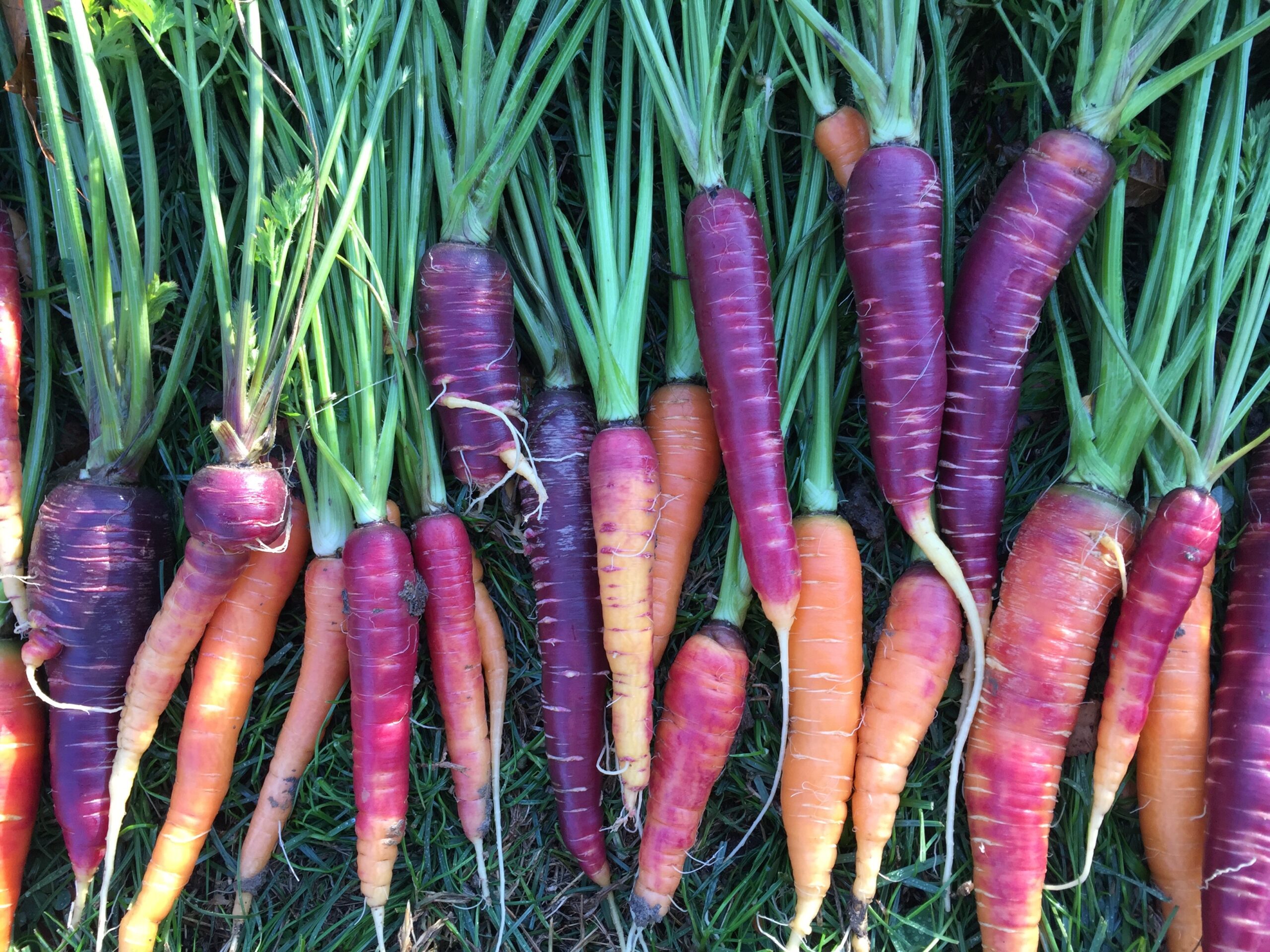
Advanced breeding lines from our breeding project grown in an on-farm trial in Indiana
Best management practices for reducing heavy metal contamination in carrot and quinoa crops
Carrot and quinoa are both highly nutritious and profitable crops, but they are prone to taking up high concentrations of toxic heavy metals like cadmium, lead and arsenic, which can negatively affect human health. The goal of this project is to help overcome this challenge by: 1) identifying sources of heavy metal contaminants in these crop production systems, 2) looking for opportunities to reduce the bioavailability and uptake of these toxic elements using locally available soil amendments, and 3) working with plant breeders to identify genotypes that restrict uptake, determining mechanisms mediating these critical traits, including the role of seed and root microbiomes, and introducing selection for low heavy metal uptake into breeding programs. The research is funded by a joint initiative between the Environmental Defense Fund and the Healthy Babies Bright Futures Program.
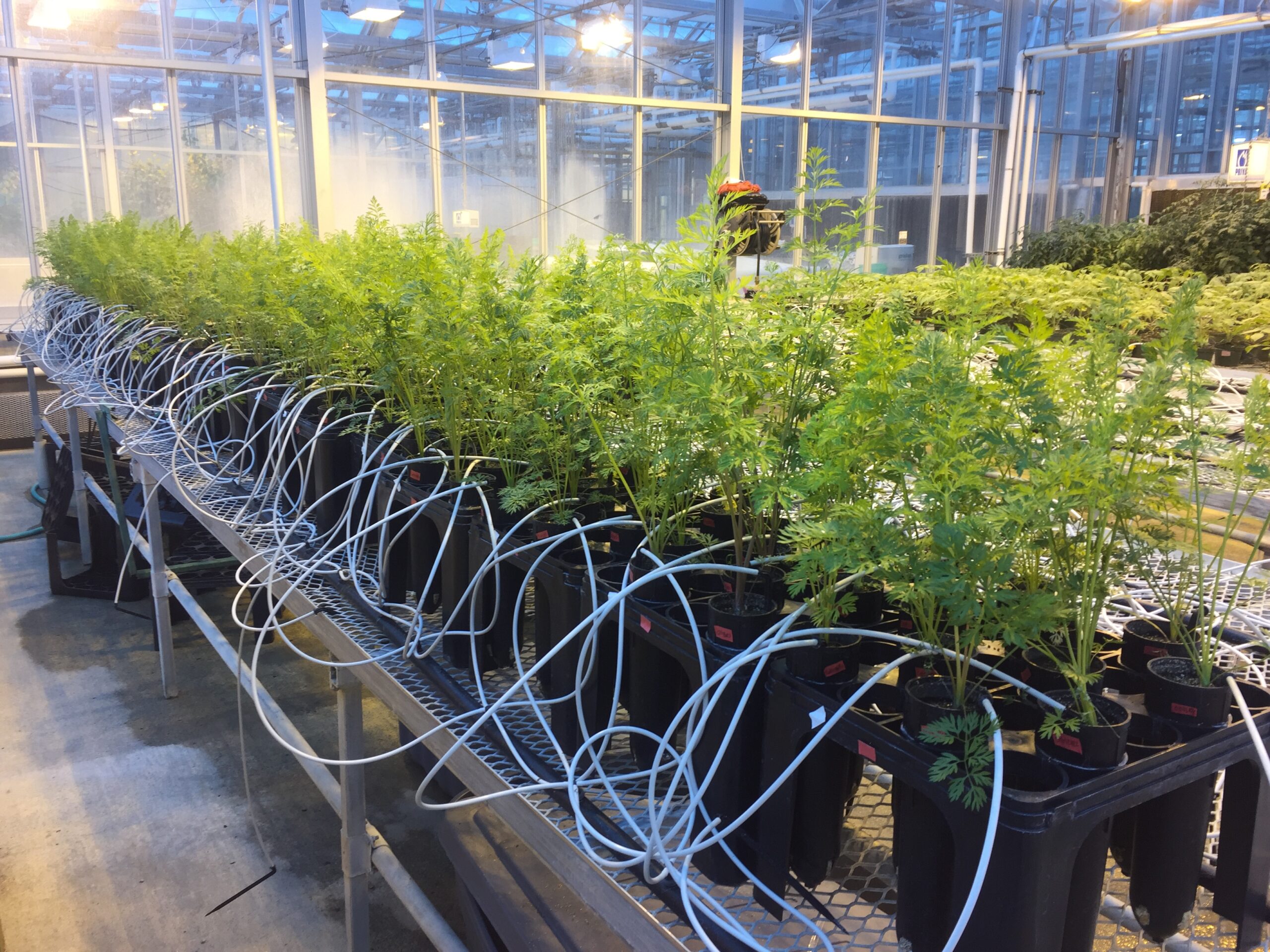
Greenhouse trial quantifying differences in cadmium uptake among a diverse set of carrot genotypes
Developing new approaches to reduce cadmium stress and predict uptake into edible plant tissues using hyperspectral imaging and machine learning
Toxic heavy metals such as cadmium, lead and arsenic can be taken up by plants and negatively affect human health. The presence of trace concentrations of these elements in soil and water can harm plants and reduce productivity, yet plants generally display few visible symptoms of stress. Thus, contamination can go undetected. Currently, the only way to quantify the presence of these contaminants in plant tissues is via destructive wet-chemical methods that are expensive, time-consuming, and generate lots of toxic waste. This makes it difficult to develop strategies that can reduce stress and prevent uptake by stabilizing these elements in soil or breeding new varieties with lower uptake. To overcome this challenge, we are working with engineers to identify spectral features and develop new algorithms that can detect heavy metal stress and predict uptake at levels that exceed current safety regulations.
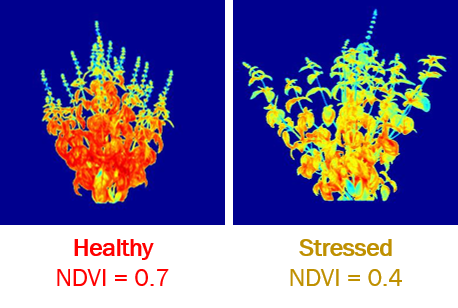
Hyperspectral images of basil plants grown in 0 and 5 ppm cadmium
Legacy effects of local composts and biosolids on soil microbiomes and their functional interactions with plants
Amending soils with local composts and municipal biosolids can help improve soil health, provide supplemental nutrients for crop plants, and reduce pressure on local landfills by recycling organic waste products. Some, but not all, composts and municipal biosolids can also help suppress pests via mechanisms that are still not well understood. Unfortunately, some of these amendments can also contain emerging contaminants like PFAS and microplastics, and in the past, some of these amendments contained high levels of toxic heavy metals like cadmium and lead. Understanding how the feedstocks and processes used to produce these amendments can influence their capacity to influence agroecosystem processes such as pathogen suppression is important for optimizing the benefits of these products. At the same, working with farmers to make sure they are not overapplying these amendments is important, since overapplication can lead to nutrient imbalances and poor water quality. In addition, making sure they are safe and understanding the long-term implications of these amendments on the health of soils and plants is necessary to realize the benefits and prevent unintended consequences of their applications. Several studies are currently underway to answer these questions, including determining how the application of contaminated biosolids in the 1970's have altered the composition and functional capabilities of soil microbiomes, and working with local compost and biosolid producers to quantify nutrient release rates, potential to suppress pathogens, and identify optimal rates.
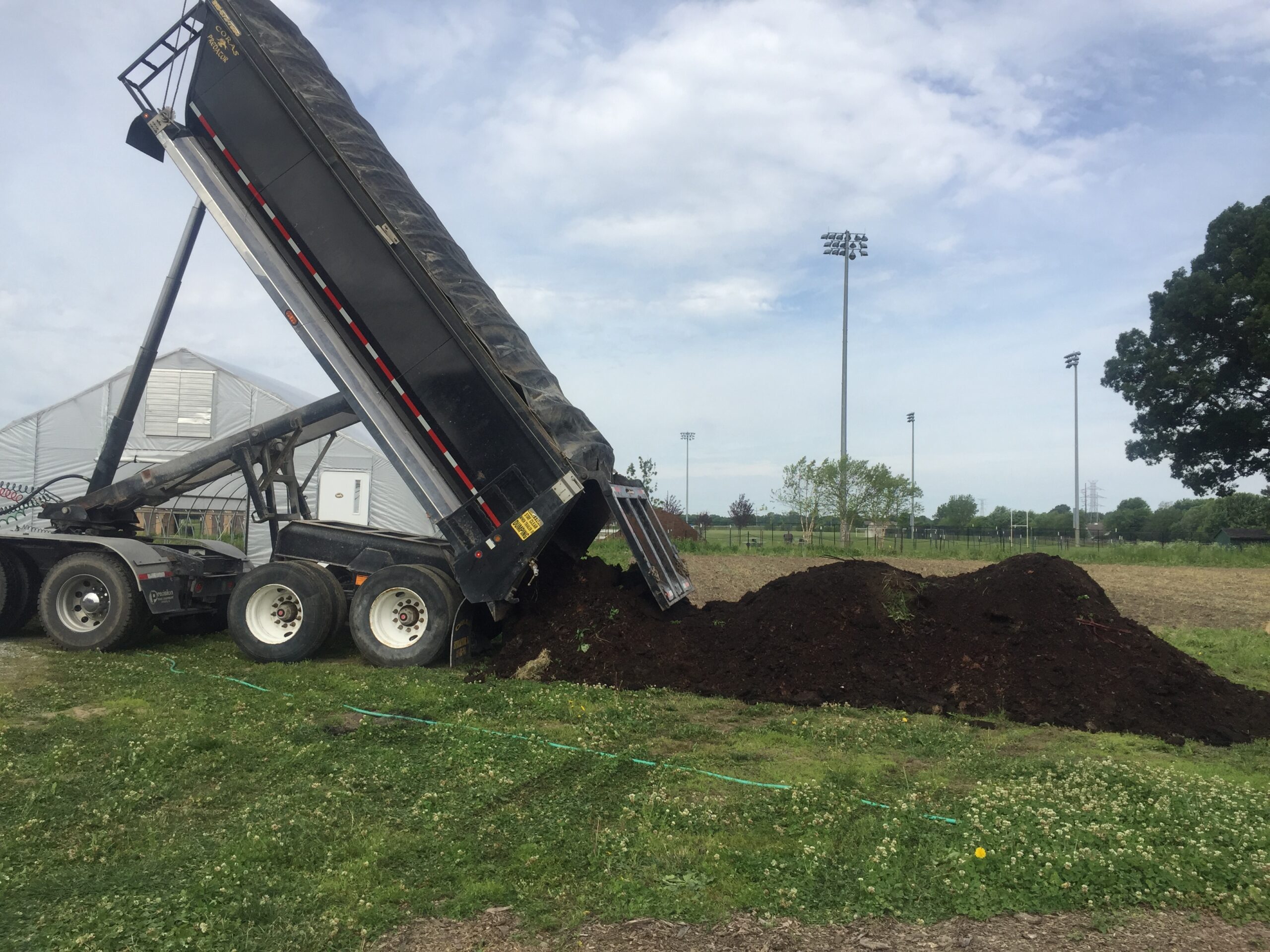
Urban compost being delivered to Purdue's student farm in West Lafayette for a research trial